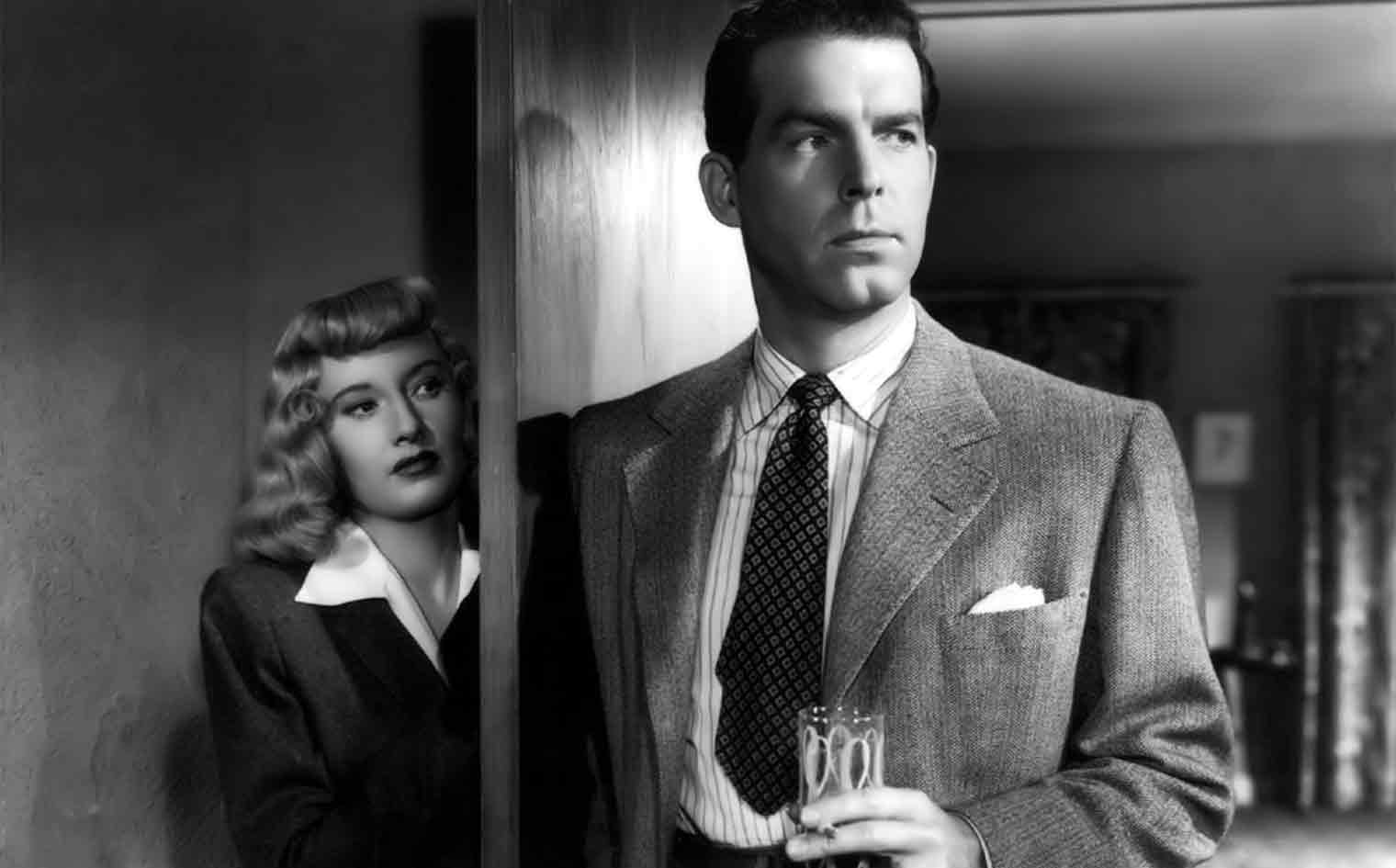DOUBLE INDEMNITY
3:308:30
Final day - Thursday, August 14
Directed by BILLY WILDER
Starring BARBARA STANWYCK FRED MacMURRAY EDWARD G. ROBINSON
70th Anniversary
New Restoration
 (1944) “Office Memorandum: I killed Dietrichson,” dictates Fred MacMurray’s bleeding insurance man Walter Neff, and then the flashbacks begin: prospective client Barbara Stanwyck’s Phyllis Dietrichson, greeting him clad only in bath towel and monogrammed ankle bracelet, exchanges double entendres (“There’s a speed limit in this state”), then swiftly turns the discussion from auto to accident insurance; but then, after Stanwyck’s husband’s “accident,” MacMurray’s boss, cigar-chomping Edward G. Robinson, and the “little man in his stomach,” just won’t let it rest. Wilder and Raymond Chandler adapted James M. Cain’s then-notorious novel. Approx. 106 min. DCP.
(1944) “Office Memorandum: I killed Dietrichson,” dictates Fred MacMurray’s bleeding insurance man Walter Neff, and then the flashbacks begin: prospective client Barbara Stanwyck’s Phyllis Dietrichson, greeting him clad only in bath towel and monogrammed ankle bracelet, exchanges double entendres (“There’s a speed limit in this state”), then swiftly turns the discussion from auto to accident insurance; but then, after Stanwyck’s husband’s “accident,” MacMurray’s boss, cigar-chomping Edward G. Robinson, and the “little man in his stomach,” just won’t let it rest. Wilder and Raymond Chandler adapted James M. Cain’s then-notorious novel. Approx. 106 min. DCP.
A UNIVERSAL PICTURES RELEASE

Reviews
“THE SEASON’S NATTIEST, NASTIEST, MOST SATISFYING MELODRAMA.”
– Time (July 10, 1944)
“THE GOLD STANDARD OF 40s NOIR!”
– Time Out (London)
"The spiffy, suave James M. Cain based mega-noir that spawned a billion scheming-bitch thrillers… Barbara Stanwyck and Fred MacMurray become unforgettable, delicious clichés the minute they cock their eyebrows at one another in and around Billy Wilder's shadowy L.A. interiors.”
– Michael Atkinson, Village Voice
"THE NE PLUS ULTRA OF DEADLY-DAME FILM NOIR! Wilder’s 1944 Double Indemnity [is] freshly restored for its 70th anniversary... but the stiletto dialogue needs no freshening.”
– David Edelstein, New York Magazine
“Stanwyck’s Phyllis Dietrichson, a platinum blonde who wears tight white sweaters, an anklet, and sleazy-kinky shoes, is perhaps the best acted and the most fixating of all the slutty, cold-blooded femmes fatales of the film noir genre. With her bold stare, her sneering, over-lipsticked, thick-looking mouth, and her strategically displayed legs, she’s a living entrapment device.”
– Pauline Kael
“Chandler and Wilder’s prose is as heightened as the shadowy look of the film, but MacMurray makes us believe in Walter as an L.A. archetype — the middle-class huckster/ bachelor whose slick, cocky outward show wards off the pain of introspection. But Walter is more self-aware than he appears... [he] brims with disgust over his erotic weakness and amoral recklessness.”
– Kevin Lally, Wilder Times: The Life of Billy Wilder
“Though it sweats blood and deals with the lowest of low morals, somehow streams along with the glee of black comedy... MacMurray first spies Stanwyck at the top of the stairs, wearing a bath towel and a look of infinite mischief. She gets dressed, for decency’s sake, although, given that her outfit includes high heels with pom-poms and an ankle bracelet engraved with the name Phyllis, it might have been better for MacMurray if she hadn’t. Decency was never dirtier.”
– Anthony Lane, The New Yorker
“An agonizing experience... but I learned from it as much about screenwriting as I am capable of learning.”
– Chandler
